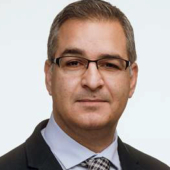THIS ARTICLE IS MORE THAN FIVE YEARS OLD
This article is more than five years old. Autism research — and science in general — is constantly evolving, so older articles may contain information or theories that have been reevaluated since their original publication date.
Editor’s Note
This article was originally published 28 March. We have updated the article following publication of an editorial by the authors 17 April in the Journal of Child Psychology and Psychiatry1.

Listen to this story:
Most autism researchers are familiar with the saying: “If you’ve seen one child with autism, you’ve seen one child with autism.” The phrase is often used to underscore the heterogeneous nature of autism, and it has certainly influenced the way I think about the condition.
But another statement, this time from a parent of a teenager with autism, has also stuck with me: “When my 3-year-old son was diagnosed with autism, I never thought he would one day be playing for his school basketball team.”
This statement speaks to the enormous variability in the developmental trajectories of children with autism. It also shows how little we know about a child’s future at the time of her diagnosis.
Much of this uncertainty stems from how we study autism. We tend to group children together based on features they share at a given point in time, and then assume that children within a particular group will share a similar developmental path. But children develop at different rates, and their individual developmental paths are rarely linear.
My colleagues and I propose the term ‘chronogeneity’ to describe the heterogeneity of autism features over time1. By incorporating the concept of chronogeneity into large autism studies, we can better understand both the common patterns of change across children with autism and the paths of children who do better or worse than expected.
Predicting the future:
Parents have a lot of questions when their child is diagnosed with autism. One of the most common ones is: “What will my child be able to do — or not do — when he gets older?” Even the most experienced clinicians find this question difficult to answer.
To address this gap in our knowledge, my colleagues and I have been following a group of 400 children with autism for the past 12 years as part of the Pathways in Autism Spectrum Disorders study2. The study is designed to map the trajectories of these children and identify factors related to their development from the time of their diagnosis through adolescence.
We have seen that some children described as ‘severely affected’ when they are young do better than expected in terms of day-to-day functioning later in life. For instance, they form stable friendships and may even join a school sports team.
Conversely, some children once described as falling on the ‘mild end of the spectrum’ may not form stable friendships. They may also have anxiety or other difficulties later in life.
Despite progress in mapping variability in group trajectories, we still don’t know why some children seem to jump from one trajectory to another. We also don’t know when this typically happens. Understanding this phenomenon is crucial. Otherwise, how do we know that the improvement a child shows during the course of an intervention stems from the treatment and is not a developmental change that would have happened anyway?
Conversation starter:
Like many others in the autism community, I have come to realize that our conventional approach to exploring heterogeneity in autism has done little to advance our understanding of the condition’s causes and how its features change over time.
We need to study children in a way that captures not only the differences between them at a particular time, but also the differences in their individual trajectories.
The concept of chronogeneity can serve as a conversation starter for this much-needed shift in the way we design our studies and analyze our data. Researchers can use statistical methods to explore chronogeneity in existing autism data.
For example, our Pathways team is looking at data from our cohort from a different angle: We are analyzing variability in change over time at the group and individual level. In so doing, we are trying to determine when and why — by examining associated factors — some individuals deviate from their group trajectories and ‘catapult’ onto a new path.
We also hope researchers incorporate the concept into the design of future studies. Our team at McMaster University in Ontario, Canada, is launching a new study designed to explore whether chronogeneity can inform clinical practice. In this effort, we plan to collect genetic, clinical and socioeconomic data from children with an autism diagnosis who visit our clinic.
We plan to use these data to identify the various factors, including interventions, that influence a child’s trajectory in this clinical setting. The information may also inform a child’s ongoing treatment, and suitability for clinical trials. We plan to follow 50 children, initially for three years, starting from the time of diagnosis. Our eventual goal is to track the development of every child diagnosed in our clinic through age 18.
I hope we can reach a point where research can explain how a toddler deemed to have severe social impairments grows into a teen who loves being part of a basketball team. By understanding the factors that shape a child’s developmental trajectory, we can plan our pathways of care accordingly.
Stelios Georgiades is assistant professor of psychiatry and behavioral neurosciences at McMaster University in Ontario, Canada. He is founder and co-director of the McMaster Autism Research Team.

By joining the discussion, you agree to our privacy policy.